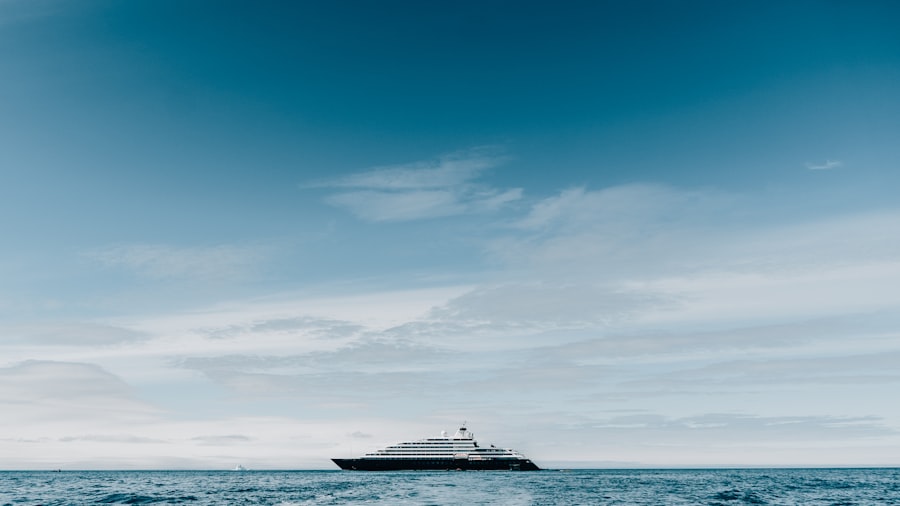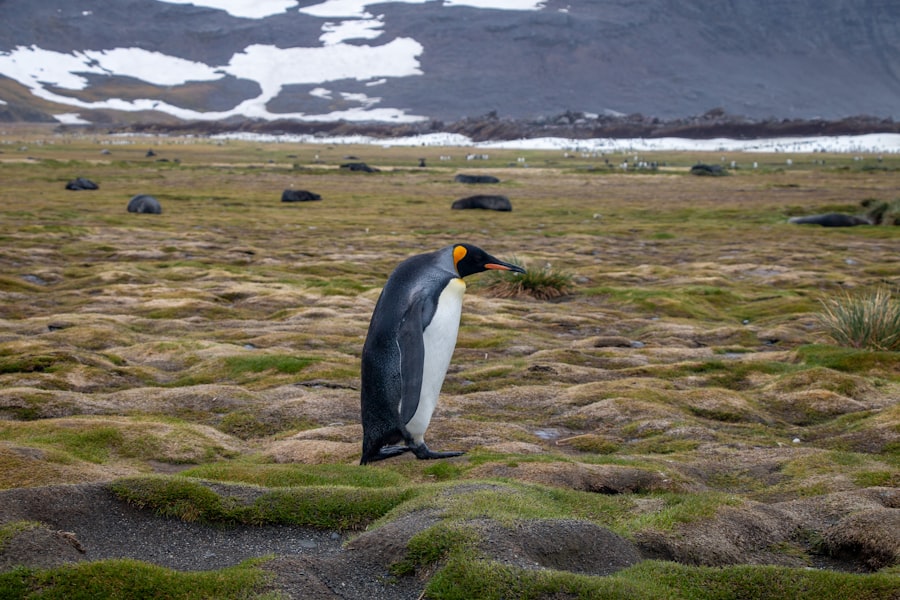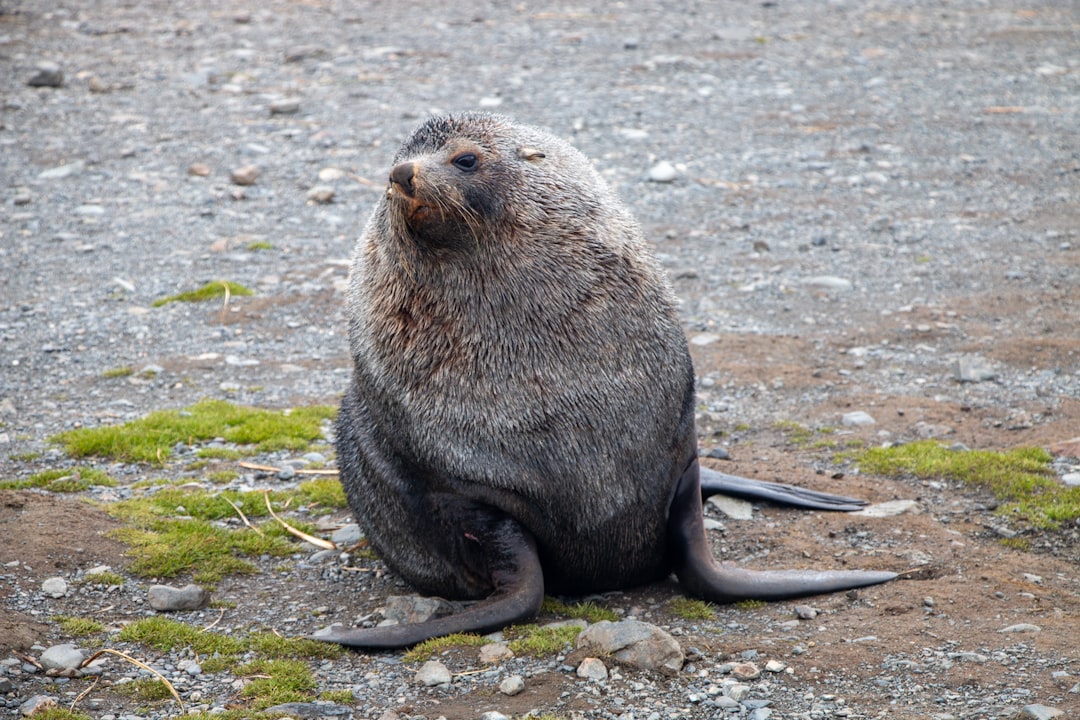The Drake Passage, a body of water that separates South America from Antarctica, is often regarded as one of the most formidable maritime routes in the world. Stretching approximately 600 miles, this passage is notorious for its unpredictable weather and turbulent seas, which can transform a serene voyage into a rollercoaster of waves and winds. For many adventurers, the challenge of crossing the Drake Passage is part of the allure, as it serves as a gateway to the pristine wilderness of Antarctica.
The journey through these waters is not merely a means of transportation; it is an experience that tests the mettle of even the most seasoned travelers. Despite its reputation for rough seas, the Drake Passage offers a unique opportunity for those willing to brave its challenges. The thrill of navigating through such a dynamic environment can be exhilarating, with the chance to witness the raw power of nature firsthand.
As the ship cuts through the waves, passengers often find themselves captivated by the vastness of the ocean and the promise of what lies ahead. The journey may be tumultuous, but it is also filled with moments of awe and anticipation, making it a rewarding experience for those who seek adventure in one of the most remote corners of the Earth.
Key Takeaways
- The Drake Passage is a challenging but rewarding journey, known for its rough seas and unpredictable weather.
- On a cruise through the Drake Passage, expect to experience strong winds, large waves, and potential seasickness.
- Antarctica is home to unique wildlife such as penguins, seals, and whales, offering a once-in-a-lifetime opportunity for wildlife enthusiasts.
- The history and exploration of Antarctica is rich, with stories of famous explorers like Ernest Shackleton and Roald Amundsen.
- To have a smooth sailing through the Drake Passage, it’s important to pack motion sickness medication, dress in layers, and be prepared for the elements.
What to Expect on a Cruise through the Drake Passage
Travelers embarking on a cruise through the Drake Passage should prepare for an array of experiences that range from exhilarating to challenging. The initial days at sea can be marked by significant swells and unpredictable weather patterns, which may lead to seasickness for some passengers. However, modern cruise ships are equipped with stabilizers and other technologies designed to minimize discomfort, allowing travelers to focus on the breathtaking views and onboard activities.
As the ship sails deeper into the passage, passengers often find camaraderie among fellow travelers, sharing stories and tips on how to navigate the sometimes tumultuous waters. In addition to the physical challenges posed by the Drake Passage, travelers can expect a wealth of educational opportunities during their journey. Many cruises feature expert naturalists and historians who provide insights into the unique geography and ecology of the region.
Passengers may attend lectures on topics ranging from marine biology to climate change, enriching their understanding of the environment they are traversing. The combination of adventure and education makes a cruise through the Drake Passage not just a journey across water, but a transformative experience that deepens one’s appreciation for this remarkable part of the world.
The Unique Wildlife of Antarctica

Antarctica is home to an astonishing array of wildlife that has adapted to its extreme conditions. Among its most iconic inhabitants are various species of penguins, including the Emperor and Adélie penguins, which have become symbols of this frozen continent. These charming birds are often seen waddling across the ice or diving into frigid waters in search of fish.
Observing their social behaviors and interactions can be a highlight for many travelers, as they witness firsthand the resilience and adaptability of life in such an inhospitable environment. In addition to penguins, Antarctica boasts a diverse range of marine life, including seals, whales, and seabirds. The nutrient-rich waters surrounding the continent support large populations of krill, which serve as a vital food source for many species.
Travelers may have the chance to spot majestic humpback whales breaching the surface or leopard seals lounging on ice floes. Each encounter with these magnificent creatures serves as a reminder of the delicate balance that exists within this ecosystem and underscores the importance of conservation efforts aimed at protecting these unique habitats.
The History and Exploration of Antarctica
| Expedition | Year | Explorer |
|---|---|---|
| First sighting of Antarctica | 1820 | Edward Bransfield |
| First confirmed landing on Antarctica | 1895 | Carsten Borchgrevink |
| First successful overland crossing of Antarctica | 1958 | Vivian Fuchs and Edmund Hillary |
| First person to reach the South Pole | 1911 | Roald Amundsen |
The history of Antarctica is rich with tales of exploration and discovery that date back centuries. Early navigators were drawn to its icy shores out of curiosity and ambition, leading to some of the most daring expeditions in human history. Notable figures such as Ernest Shackleton and Robert Falcon Scott embarked on perilous journeys across treacherous terrain in search of knowledge and glory.
Their stories are filled with both triumphs and tragedies, illustrating the indomitable spirit of exploration that has characterized humanity’s quest to understand this remote land. As explorers ventured further into Antarctica, they laid the groundwork for scientific research that continues to this day. The establishment of research stations in the mid-20th century marked a new era in Antarctic exploration, shifting focus from mere discovery to understanding the continent’s complex ecosystems and climate patterns.
Today, scientists from around the world collaborate in their efforts to study everything from glaciology to marine biology, contributing valuable insights that inform global discussions on climate change and environmental conservation.
Tips for a Smooth Sailing through the Drake Passage
For those preparing to cross the Drake Passage, there are several tips that can help ensure a smoother sailing experience. First and foremost, travelers should consider their health and well-being before embarking on their journey. Taking seasickness medication in advance can alleviate discomfort during rough seas, allowing passengers to enjoy their time onboard without distraction.
Staying hydrated and consuming light meals can also help mitigate nausea while providing energy for activities.
Temperatures can fluctuate dramatically, so wearing moisture-wicking base layers topped with insulating mid-layers and waterproof outer layers will keep travelers comfortable throughout their journey.
Being prepared for sudden changes in weather will enhance one’s ability to enjoy outdoor excursions and wildlife sightings while crossing this iconic maritime route.
The Spectacular Scenery of the Antarctic Peninsula

The Antarctic Peninsula is renowned for its breathtaking landscapes that captivate all who venture into its icy embrace. Towering glaciers, dramatic icebergs, and rugged mountain ranges create a stunning backdrop that seems almost otherworldly. As ships navigate through narrow channels and fjords, passengers are treated to panoramic views that showcase nature’s artistry at its finest.
The interplay between light and ice creates mesmerizing reflections that change throughout the day, offering endless opportunities for photography enthusiasts. In addition to its striking visual appeal, the Antarctic Peninsula is also home to unique geological features that tell a story of Earth’s history. Visitors may encounter ancient rock formations and evidence of past glacial activity that provide insight into climate changes over millennia.
Activities and Excursions on an Antarctic Cruise
An Antarctic cruise offers an array of activities and excursions designed to immerse travelers in this extraordinary environment. Zodiac boat excursions allow passengers to venture closer to icebergs and wildlife habitats, providing unparalleled opportunities for observation and photography. These small inflatable boats enable travelers to navigate through narrow passages that larger vessels cannot access, enhancing their connection with nature.
In addition to wildlife watching, many cruises offer guided hikes on land where passengers can explore unique geological formations and observe penguin colonies up close. Kayaking in icy waters provides another thrilling way to experience Antarctica’s beauty while fostering a sense of adventure. For those seeking an even more immersive experience, some cruises offer camping onshore, allowing travelers to spend a night beneath the stars in one of the most remote places on Earth.
The Importance of Conservation in Antarctica
As one of the last untouched frontiers on Earth, Antarctica holds immense ecological significance that necessitates careful conservation efforts. The delicate balance of its ecosystems is threatened by climate change, pollution, and human activity. Recognizing this vulnerability has led to international agreements aimed at protecting Antarctica’s unique environment.
The Antarctic Treaty System serves as a framework for cooperation among nations in preserving this pristine wilderness while promoting scientific research. Conservation initiatives focus not only on protecting wildlife but also on mitigating human impact through responsible tourism practices. Educating travelers about Leave No Trace principles encourages visitors to minimize their footprint while exploring this fragile landscape.
By fostering awareness and appreciation for Antarctica’s natural wonders, conservation efforts aim to ensure that future generations can experience its beauty just as those before them have.
The Scientific Research Conducted in Antarctica
Antarctica serves as a vital hub for scientific research across various disciplines due to its unique climate and ecosystems. Researchers from around the globe converge on this remote continent to study everything from glaciology to astrophysics. The data collected in Antarctica provides invaluable insights into global climate patterns, helping scientists understand how changes in temperature and ice melt may impact sea levels worldwide.
In addition to climate research, Antarctica is also a living laboratory for studying biodiversity and ecosystem dynamics. Scientists investigate how species adapt to extreme conditions while examining food webs and predator-prey relationships within this fragile environment. The findings from these studies contribute significantly to our understanding of ecological resilience and inform conservation strategies aimed at protecting vulnerable species.
The Cultural Significance of Antarctica to Indigenous Peoples
While Antarctica is often viewed as a barren wasteland devoid of human culture, it holds profound significance for Indigenous peoples who have long histories connected to its surrounding regions. For many Indigenous communities in South America, particularly those in Chile and Argentina, Antarctica represents not only a physical boundary but also a cultural heritage tied to their ancestral lands. Their traditional knowledge encompasses an understanding of marine ecosystems and migratory patterns that have been passed down through generations.
The cultural significance extends beyond mere geography; it encompasses stories, traditions, and spiritual connections that shape Indigenous identities. As discussions around conservation and resource management continue to evolve, recognizing Indigenous perspectives becomes increasingly important in ensuring that their voices are heard in decisions affecting both their communities and Antarctica’s future.
How to Prepare for a Cruise to Antarctica
Preparing for a cruise to Antarctica requires careful planning and consideration to ensure an enjoyable experience in this remote destination. First and foremost, travelers should research various cruise options available based on their interests—whether they prioritize wildlife viewing, adventure activities, or educational experiences—allowing them to select an itinerary that aligns with their preferences. Packing appropriately is crucial for navigating Antarctica’s unpredictable weather conditions.
Essential items include waterproof outerwear, insulated layers, sturdy footwear suitable for hiking on uneven terrain, and accessories like gloves and hats to protect against cold winds. Additionally, travelers should consider bringing binoculars for wildlife spotting and cameras equipped with telephoto lenses to capture stunning photographs of this breathtaking landscape. In conclusion, embarking on a journey through the Drake Passage offers adventurers an unparalleled opportunity to explore one of Earth’s last frontiers—Antarctica.
From its challenging waters to its breathtaking scenery and unique wildlife, every aspect of this experience contributes to a deeper understanding of our planet’s natural wonders and highlights the importance of conservation efforts aimed at preserving these fragile ecosystems for generations to come.
Embarking on an Antarctica cruise through the Drake Passage is a thrilling adventure that offers breathtaking views and unique wildlife encounters. For those interested in learning more about the journey and what to expect, a related article on MyGeoQuest provides valuable insights and tips for travelers. You can read more about the experience by visiting this
